Who’s ready for a Roman holiday? Because chicken saltimbocca is an Italian classic! To make it, juicy chicken cutlets are topped with sage and prosciutto, pan-fried, and finished with a deliciously buttery wine sauce. All it takes is 30 minutes!
This saltimbocca recipe is a restaurant favorite that’s easy to make at home, just like my Chicken Cacciatore and creamy Chicken Madeira!

This chicken saltimbocca (pronounced “sal-tim-bo-kah”) is a quick homemade version of a dish I always order at our local Italian restaurant down the street. My husband loves Italian food, and their saltimbocca is one of his favorites, so I wanted to bring this beloved dish home.
In this recipe, juicy chicken is topped with citrusy sage leaves, wrapped in salty Italian prosciutto, dredged, and seared before it’s served with a buttery pan sauce. You need only one skillet, and the whole thing comes together in 30 minutes or less.
What Is Chicken Saltimbocca? (And Why You’ll Love It!)
- Classic Italian cooking. Saltimbocca is a classic Italian recipe made from veal cutlets and sage wrapped in prosciutto and pan-fried. I use chicken breast, not veal, to make this recipe more approachable. But the flavors are just as good, especially when you add the pan sauce!
- Savory, buttery, tangy. I love the subtle mintiness of the sage leaves against the saltiness of the cured meat and the butteriness of the sauce. White wine makes the sauce a little tangy, too, so the combination of flavors is simply *chef’s kiss*.
- Quick and easy. All you need is 30 minutes and one pan. Saltimbocca is the perfect dinner for two (hello, date night!) and it’s also easy to scale up the recipe whenever we entertain. Between the name and the taste, chicken saltimbocca sounds fancy, but it’s ridiculously simple to make.

What You’ll Need
I think what I love most about Italian cooking, and especially recipes like chicken saltimbocca, is how you need so few ingredients to pack ALL that flavor onto a plate.
I’ve included some recipe notes here. Scroll to the printable recipe card below the post for a full ingredients list with amounts.
- Chicken – Chicken breasts are easiest to wrap, but boneless chicken thighs will work too. Of course, if you can get your hands on some veal cutlets, you can always make this saltimbocca recipe the traditional way.
- Sage – Fresh sage leaves are a must. You’ll find sage in the grocery store next to the other fresh herbs (unless you’re lucky enough to grow it in your garden).
- Prosciutto – Prosciutto crudo is Italian dry-cured ham that usually comes thinly sliced. Ask your local deli counter if you can’t find it readily available. In a pinch, you can wrap your chicken with another cured meat, like capicola, serrano ham, or even bacon.
- Flour – Regular all-purpose flour is fine or you can use your choice of gluten-free flour. I’ve used coconut flour and loved it.
- Olive Oil – Choose a nice quality extra virgin olive oil for pan-searing.
- Butter – Salted or unsalted.
- Garlic – Please stick with freshly minced garlic for this recipe.
- White Wine – Make sure to use a dry white, like Pinot Grigio or Chardonnay. Another option is to use Madeira or Marsala wine (both are Italian fortified wines) or dry sherry instead. If you’d rather skip the alcohol, use chicken stock.
- Chicken Stock – I like to cook with low-sodium chicken broth so I can control the saltiness better. Vegetable stock also works.
How to Make Chicken Saltimbocca
Chicken saltimbocca is prepared in a very similar style to other Italian favorites like chicken piccata or chicken marsala. The chicken gets pounded thin, dredged in flour, and pan-seared. In this case, we’ll smother it with prosciutto first. But the steps are just as easy:
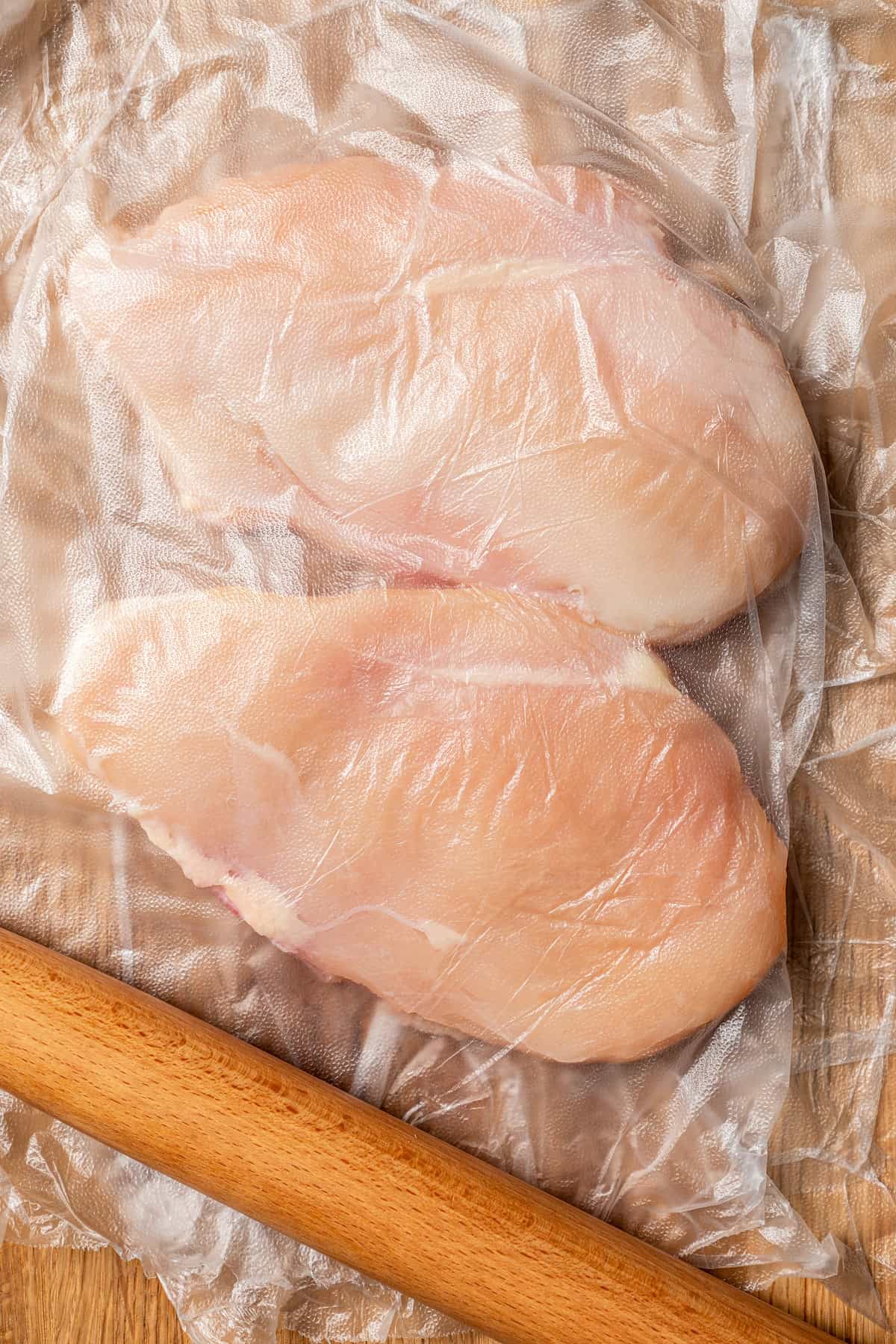

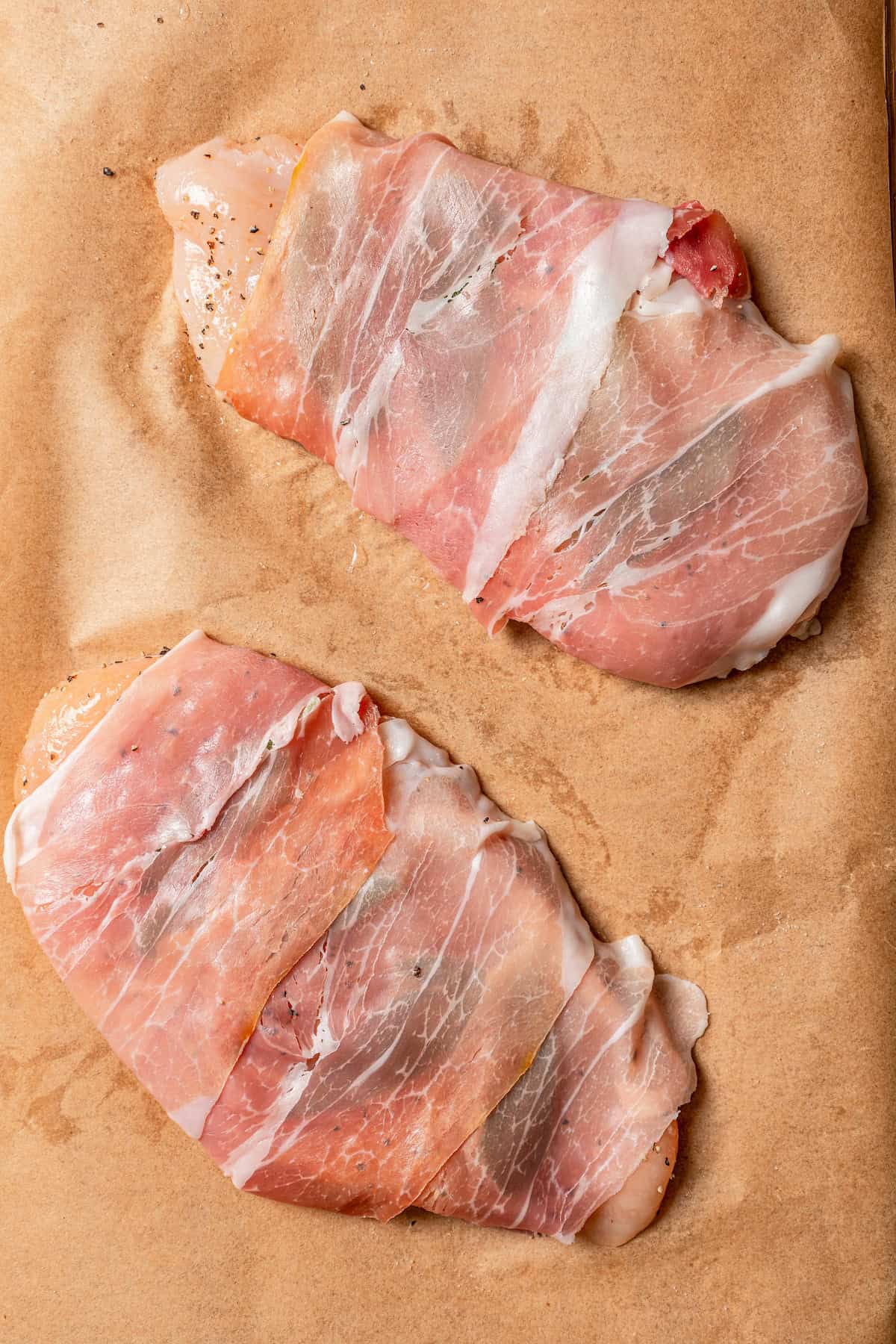
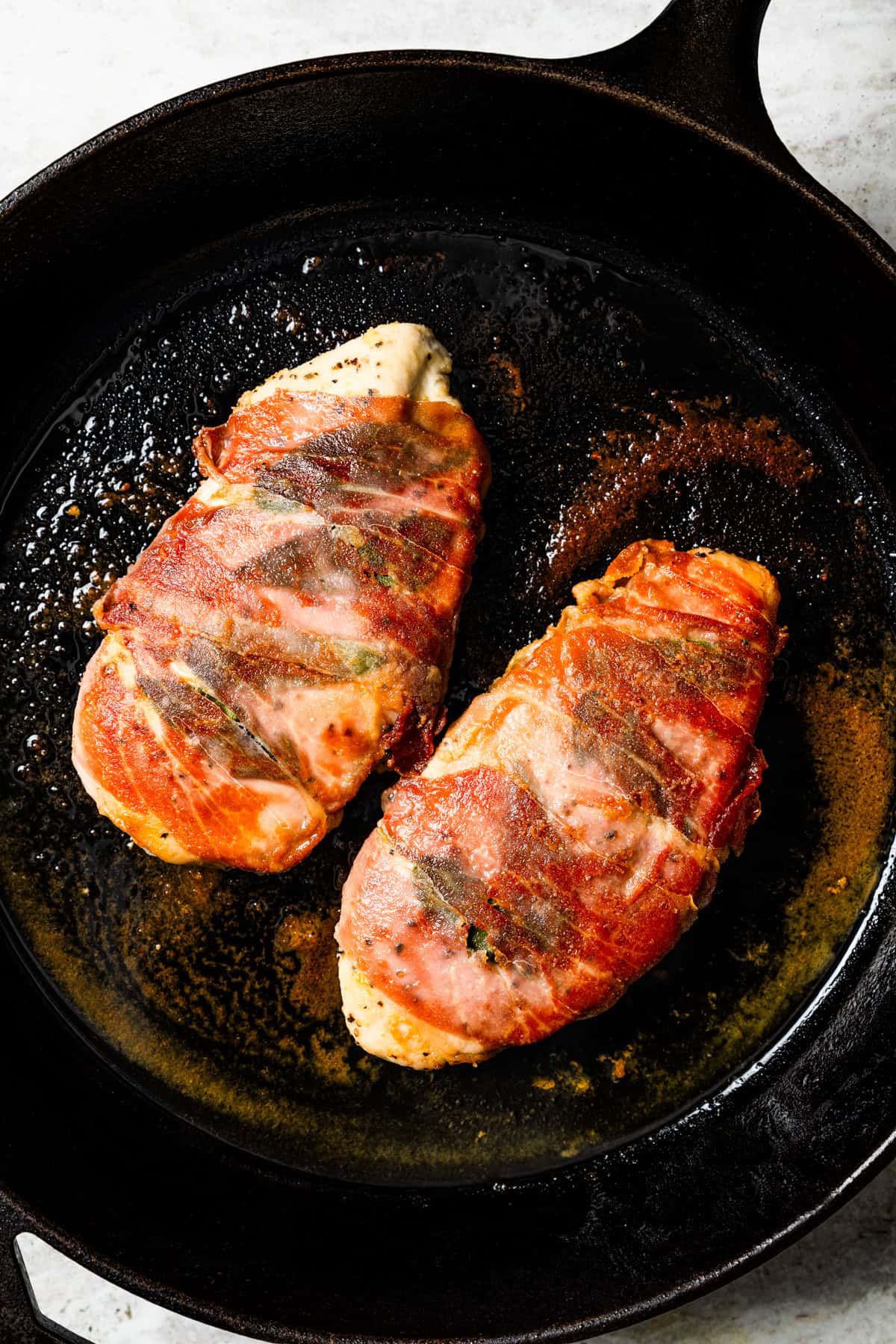
- Prep the chicken. First, you’ll want to pound the chicken to an even thickness so it cooks evenly. Season the chicken on both sides and arrange 4 sage leaves over each breast, followed by a couple of slices of prosciutto. One at a time, dredge the chicken breasts lightly in flour.
- Pan-fry. Sear the chicken, prosciutto side down, in a hot skillet with oil. After 3 minutes, flip, and cook for another 3 minutes until the cutlets are cooked through.
Make the Pan Sauce
Now, it’s time to turn all those leftover caramelized bits into a flavorful white wine and butter sauce:
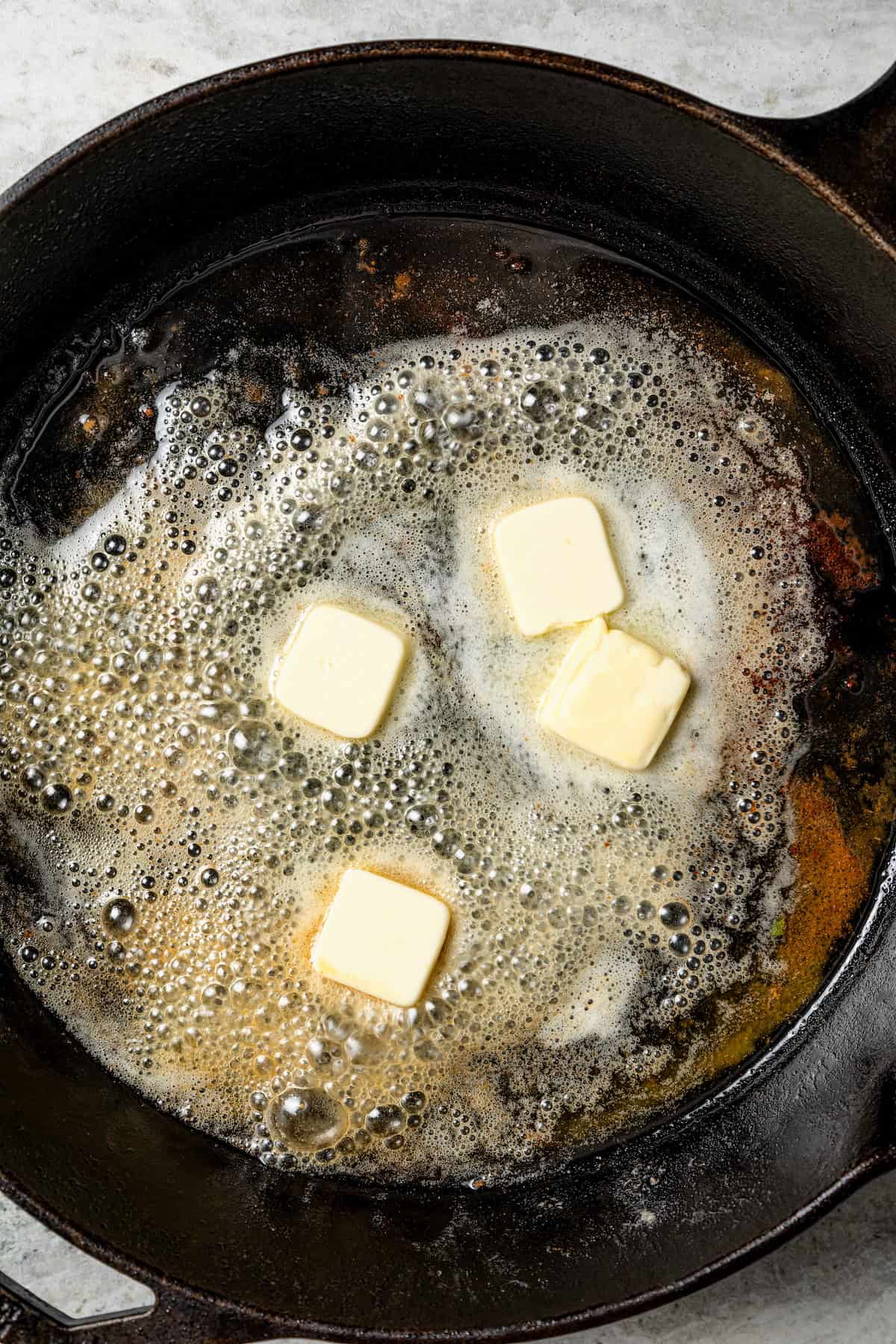
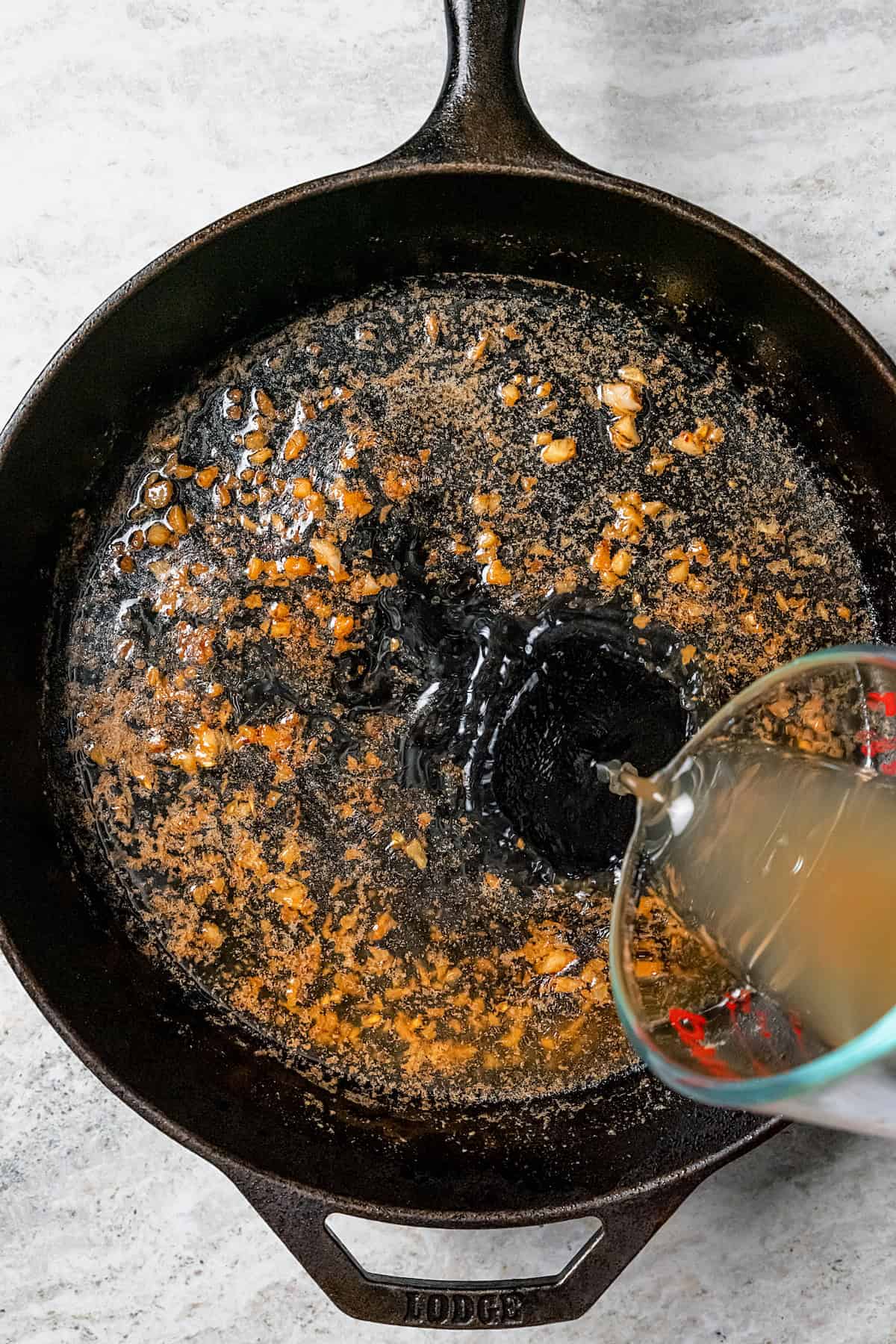
- Make the sauce. Set the chicken aside on a plate. In the same skillet, melt butter and then sauté the garlic for a minute. Deglaze the pan with wine, add chicken stock, and let that simmer until it thickens.
- Serve. When your sauce is ready, drizzle it over the chicken, and serve! See further on for more easy serving suggestions.
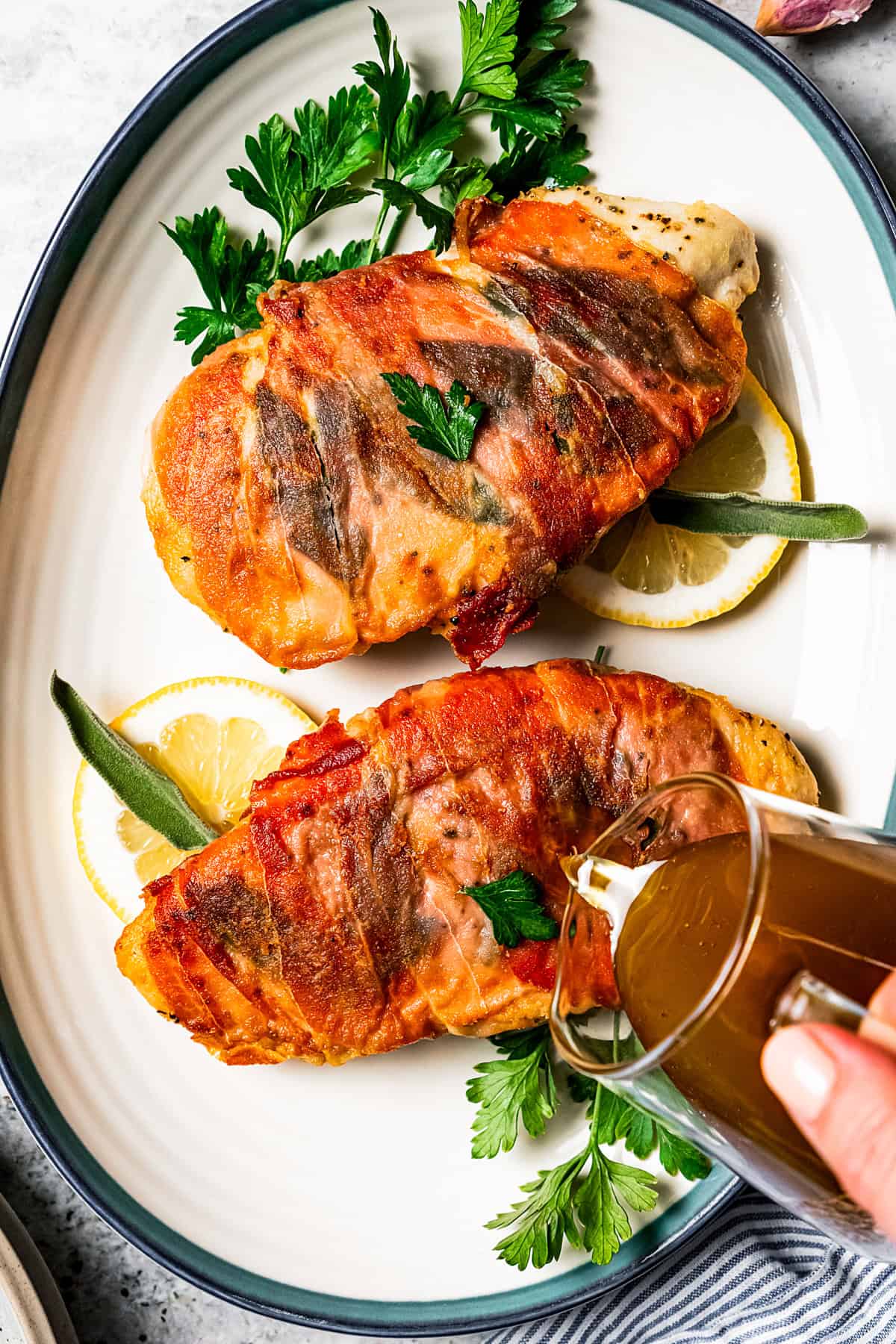
Recipe Tips
- Use plastic wrap. I find it’s easiest to pound the chicken breasts thin between two pieces of plastic wrap. You can use a meat mallet if you have one. Otherwise, a rolling pin does the trick.
- Lightly dredge the chicken. We’re not making chicken Milanese, so a light coating with flour is all you need. It helps crisp up the outside so that it’s golden, and the excess flour in the pan helps to thicken the sauce afterward.
- Check for doneness. Pan-fry the chicken until it’s no longer pink and the juices run clear. Chicken is done cooking when the internal temperature reaches 165ºF on a meat thermometer.
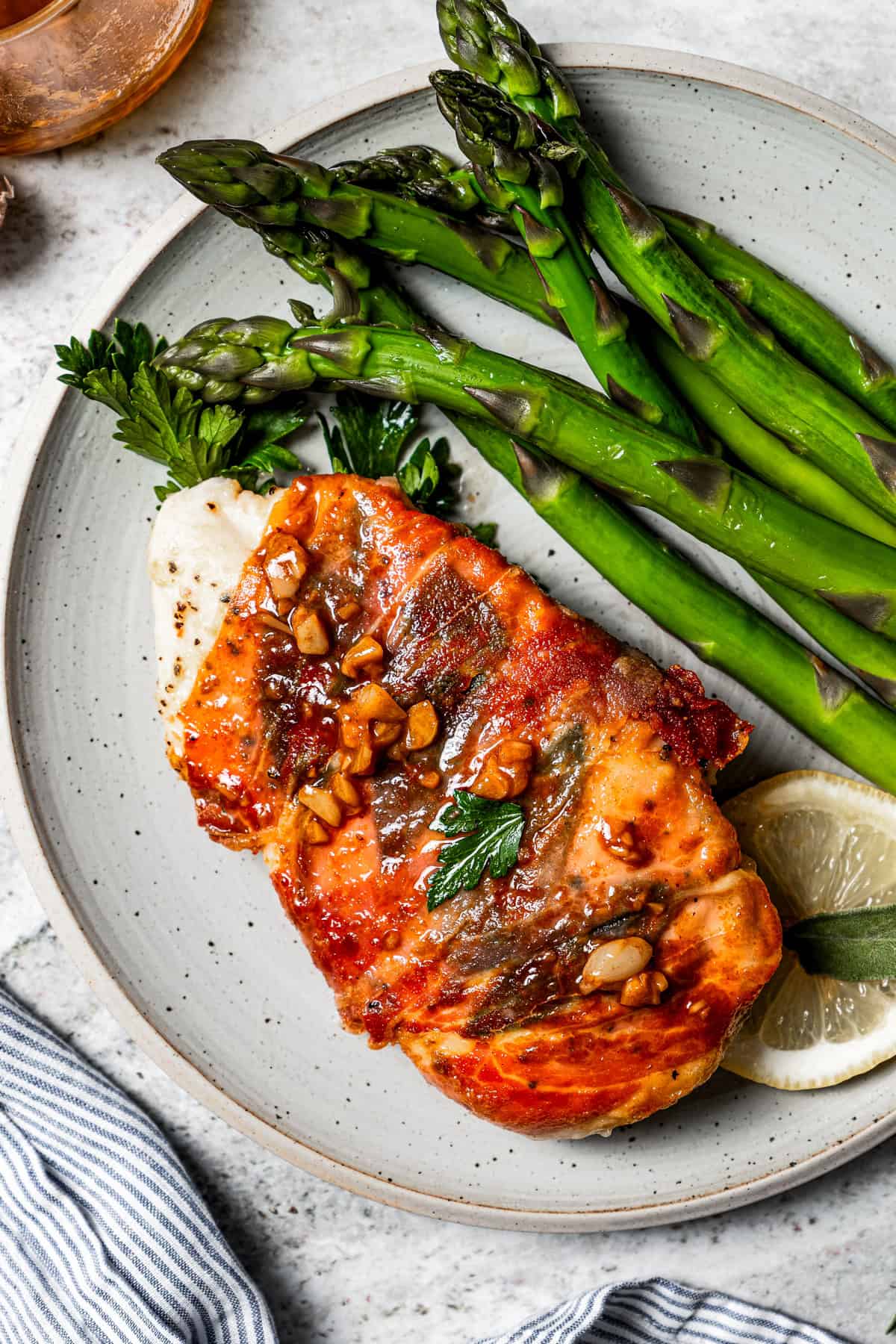
What to Serve With Saltimbocca
I love chicken saltimbocca with a light and easy side of steamed or grilled asparagus or a side of green salad or zucchini salad. For a stick-to-your-ribs dinner, saltimbocca goes great with mashed potatoes or a platter of Vesuvio potatoes, and I’ll start the meal with a cozy bowl of creamy tortellini soup.
And if it’s date night in, we’re definitely ending with a scoop of tiramisu ice cream!
Frequently Asked Questions
In Italian, “saltimbocca” translates literally to “jump in your mouth”, which is exactly what this dish does!
Traditionally, Marsala is a type of fortified wine used to make Saltimbocca in Italy. When making the pan sauce for your saltimbocca, however, just about any white wine works, even sparkling wine. I always say, when it comes to cooking, use a wine you’d like to drink.
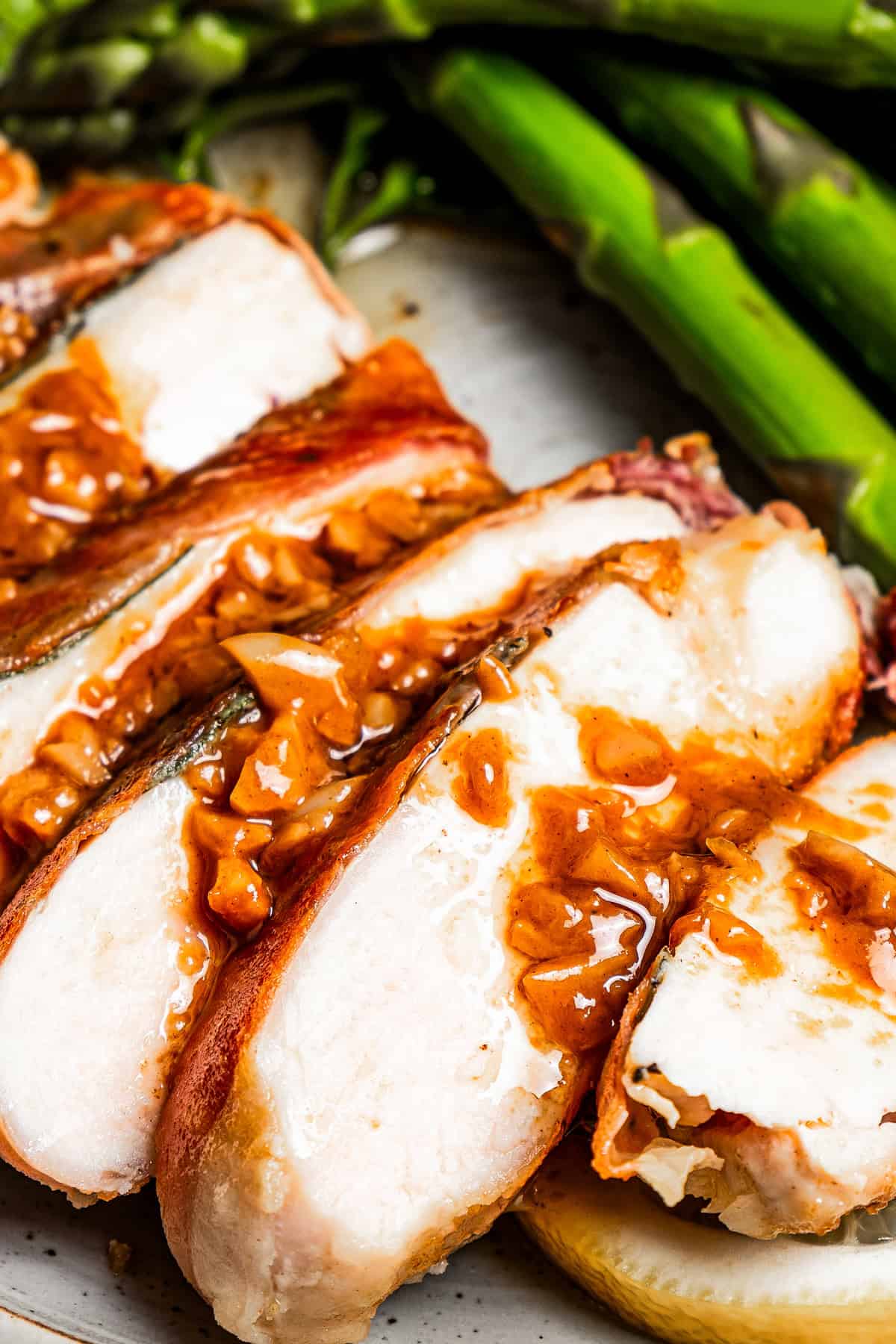
Storing and Reheating Leftovers
- Refrigerate. Leftover chicken saltimbocca can be stored with the sauce in an airtight container in the fridge for 3-4 days.
- Reheat. I like to reheat saltimbocca in a covered saucepan on the stovetop or a 400ºF oven under foil so that it doesn’t dry out. You can use the microwave, but the texture isn’t quite as nice.
- Freeze. Freeze the chicken and the sauce in a freezer-safe container or freezer bag for up to 3 months and thaw in the fridge before reheating.
More Chicken Recipes
Pin this now to find it later
-
Pound the chicken. Place the chicken between 2 pieces of plastic wrap on a work surface. Use a meat mallet, a rolling pin, or something similar to pound each piece to an even thickness of about ⅓-inch.
-
Prepare the chicken. Season the chicken breasts evenly on both sides with salt and pepper. Lay the chicken flat on a work surface and arrange 4 sage leaves flat over each piece. Place 2 pieces of prosciutto on top of the sage leaves over each piece of chicken. Press the prosciutto into the chicken.
-
Dredge. Add the flour to a rimmed plate and dredge both sides of each piece of chicken lightly in the flour.
-
Pan fry. Heat the olive oil over medium-high heat in a large, heavy-bottomed saucepan. Add the chicken, prosciutto-side down, and sear for 3 minutes. Flip and cook for an additional 3 minutes or until the chicken reaches an internal temperature of 165°F. Transfer the chicken to a plate and set aside.
-
Make the sauce. Reduce the heat to medium and add the butter to the pan. Once the butter has melted, add the garlic and saute for 1 minute. Add the white wine and cook for 1 minute. Add the chicken stock and cook for 3-5 minutes or until the sauce has thickened.
-
Put it all together. Pour the sauce over the chicken and serve warm.
Calories: 999kcal | Carbohydrates: 52g | Protein: 58g | Fat: 57g | Saturated Fat: 21g | Polyunsaturated Fat: 5g | Monounsaturated Fat: 26g | Trans Fat: 1g | Cholesterol: 217mg | Sodium: 2.382mg | Potassium: 1.053mg | Fiber: 2g | Sugar: 2g | Vitamin A: 778IU | Vitamin C: 4mg | Calcium: 44mg | Iron: 4mg
Nutritional info is an estimate and provided as courtesy. Values may vary according to the ingredients and tools used. Please use your preferred nutritional calculator for more detailed info.


